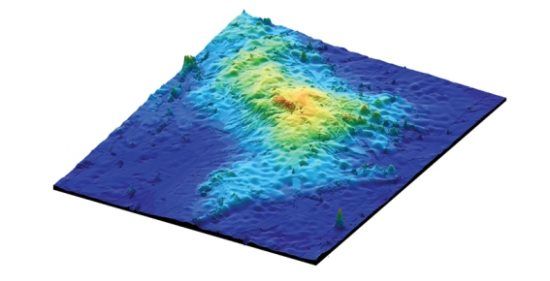Hawaii's Mauna Loa will have to deal with it. Deep in the Pacific, the largest underwater volcano on Earth is. It is called the Tamu Massif and its extension is equal to 310 thousand square kilometers, against just 5 thousand of the Hawaiian volcano. Where is it?
He is about to end up run over, his mother saves himIl Mauna Loa of Hawaii will have to deal with it. It is in the depths of the Pacific largest underwater volcano on Earth. And the Tamu massif and its extension is equal to 310 thousand square kilometers, against just 5 thousand of the Hawaiian volcano. Where is it?
The new volcano rises from the depths of the Pacifico, 1600 km off the coast of Japan. Scientists have long been studying the underwater plateau where the volcano once stood, but due to its limited height it has long been doubted that it was a Guinness Book of Records. It is its overall size that makes it a giant, ready to challenge the largest volcano in the entire solar system, the Mount Olympus which rises on Mars, 25 km high and 600 in diameter.
The shallow rocky cores of Tami they had previously revealed that it was made of lava. But geologists thought that the mountain, which rises 4km from the sea floor, was formed by several volcanoes that erupted in ancient times, much like the islands of Hawaii and Iceland.
It was not, however, a volcano complex, but of a single great 'creature'. Indeed, it was not his height that aroused the curiosity of scientists as much as hers overall extension. The Tamu Massif at its highest point is more than 2km below the ocean surface. But unlike other underwater volcanoes, it is characterized by a 'slight' slope, in spite of its extension reaching a record number of 310.000 square kilometers, roughly the same as the base of Mars's Mount Olympus. But the slopes of the massif are exceptionally low, due to the very dense lava that flowed slowly before hardening.

The Japanese mega-volcano, according to the new study published in Nature, remained inactive for about 140 million years. But its very existence could provide geophysicists with useful information to better understand the amount of magma that can be stored in the earth's crust and poured to the surface.
But there is more. His presence proved that even the Earth is capable of hosting large volcanoes, like other planets in the solar system.
Francesca Mancuso
Photo: Markgalick.com
READ also:
- A chain of 12 active underwater volcanoes is discovered in Antarctica
- The underground Marsili Volcano has awakened: possible tsunami also in the Tyrrhenian Sea?


























